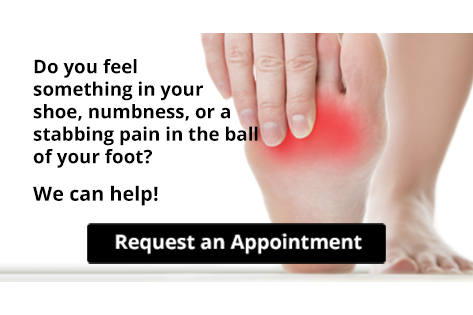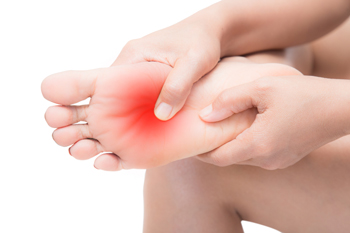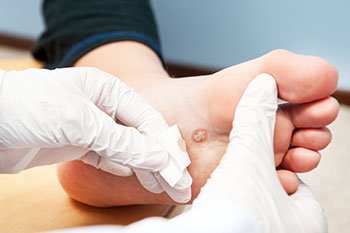 Pronation refers to the foot turning downward or inward as you walk or run. This is a normal component of a gait or walking pattern. In some people, however, the foot turns downward or inward too much, resulting in overpronation. This is a biomechanical problem that is particularly common among people with flat feet and can lead to foot and ankle problems such as plantar fasciitis and Achilles tendonitis. Runners and other athletes who have an overpronated gait are at an increased risk of foot and ankle injuries and often require specialized footwear or orthotics to help correct their gait and prevent injuries. If you suspect you may have an overpronated gait, a podiatrist can perform a gait analysis and determine the right course of treatment for you.
Pronation refers to the foot turning downward or inward as you walk or run. This is a normal component of a gait or walking pattern. In some people, however, the foot turns downward or inward too much, resulting in overpronation. This is a biomechanical problem that is particularly common among people with flat feet and can lead to foot and ankle problems such as plantar fasciitis and Achilles tendonitis. Runners and other athletes who have an overpronated gait are at an increased risk of foot and ankle injuries and often require specialized footwear or orthotics to help correct their gait and prevent injuries. If you suspect you may have an overpronated gait, a podiatrist can perform a gait analysis and determine the right course of treatment for you.
If you have any concerns about your feet, contact Dr. Alexander Terris from Total Foot Care. Our doctor can provide the care you need to keep you pain-free and on your feet.
Biomechanics in Podiatry
Podiatric biomechanics is a particular sector of specialty podiatry with licensed practitioners who are trained to diagnose and treat conditions affecting the foot, ankle and lower leg. Biomechanics deals with the forces that act against the body, causing an interference with the biological structures. It focuses on the movement of the ankle, the foot and the forces that interact with them.
A History of Biomechanics
Modern technological improvements are based on past theories and therapeutic processes that provide a better understanding of podiatric concepts for biomechanics. Computers can provide accurate information about the forces and patterns of the feet and lower legs.
Understanding biomechanics of the feet can help improve and eliminate pain, stopping further stress to the foot.
If you have any questions please feel free to contact our office located in Wilmington, DE . We offer the newest diagnostic and treatment technologies for all your foot and ankle needs.
Read more about Biomechanics in Podiatry In the first 5 years of a child’s life, their feet grow very fast. Because it is also important that the bones in the feet grow straight, proper footwear is very important. As a baby, the bones in the toes are very soft, and shoes or socks that are too tight can prevent those bones from growing properly. In fact, children generally don’t need shoes until they begin walking on their own. Shoes that fasten with velcro are also important because they can help hold the heel in place and keep the foot from slipping. If you have other questions or concerns about what shoes your child should be wearing, a podiatrist will be able to help make further recommendations.
In the first 5 years of a child’s life, their feet grow very fast. Because it is also important that the bones in the feet grow straight, proper footwear is very important. As a baby, the bones in the toes are very soft, and shoes or socks that are too tight can prevent those bones from growing properly. In fact, children generally don’t need shoes until they begin walking on their own. Shoes that fasten with velcro are also important because they can help hold the heel in place and keep the foot from slipping. If you have other questions or concerns about what shoes your child should be wearing, a podiatrist will be able to help make further recommendations.
The health of a child’s feet is vital to their overall well-being. If you have any questions regarding foot health, contact Dr. Alexander Terris of Total Foot Care. Our doctor can provide the care you need to keep you pain-free and on your feet.
Tips for Keeping Children's Feet Healthy
If you have any questions, please feel free to contact our office located in Wilmington, DE . We offer the newest diagnostic and treatment technologies for all your foot care needs.
Read more about How to Care for Your Child's Feet
Suffering from this type of pain? You may have the foot condition known as Morton's neuroma. Morton's neuroma may develop as a result of ill-fitting footwear and existing foot deformities. We can help.
 Morton's neuroma is a swollen, inflamed nerve in the foot. It usually occurs on the nerves between the toes. Symptoms of this condition include sharp, burning pains on the bottom of the foot, and numbness that can radiate to nearby toes. The pain of a Morton’s neuroma usually increases with activity and decreases at rest or when massaging the foot. Conservative treatments such as resting and icing the foot, taking anti-inflammatory medications, and modifying activities and footwear can alleviate symptoms. Surgery may be an option in severe or chronic cases. If you are experiencing the symptoms of Morton’s neuroma, please seek the care of a podiatrist.
Morton's neuroma is a swollen, inflamed nerve in the foot. It usually occurs on the nerves between the toes. Symptoms of this condition include sharp, burning pains on the bottom of the foot, and numbness that can radiate to nearby toes. The pain of a Morton’s neuroma usually increases with activity and decreases at rest or when massaging the foot. Conservative treatments such as resting and icing the foot, taking anti-inflammatory medications, and modifying activities and footwear can alleviate symptoms. Surgery may be an option in severe or chronic cases. If you are experiencing the symptoms of Morton’s neuroma, please seek the care of a podiatrist.
Morton’s neuroma is a very uncomfortable condition to live with. If you think you have Morton’s neuroma, contact Dr. Alexander Terris of Total Foot Care. Our doctor will attend to all of your foot care needs and answer any of your related questions.
Morton’s Neuroma
Morton's neuroma is a painful foot condition that commonly affects the areas between the second and third or third and fourth toe, although other areas of the foot are also susceptible. Morton’s neuroma is caused by an inflamed nerve in the foot that is being squeezed and aggravated by surrounding bones.
What Increases the Chances of Having Morton’s Neuroma?
Morton’s neuroma is a very treatable condition. Orthotics and shoe inserts can often be used to alleviate the pain on the forefront of the feet. In more severe cases, corticosteroids can also be prescribed. In order to figure out the best treatment for your neuroma, it’s recommended to seek the care of a podiatrist who can diagnose your condition and provide different treatment options.
If you have any questions, please feel free to contact our office located in Wilmington, DE . We offer the newest diagnostic and treatment technologies for all your foot care needs.
Read more about Morton's Neuroma An ingrown toenail occurs when the toenail curves and grows down into the skin on the sides of the nail. As the toenail digs into the flesh and the flesh grows around it, pain, inflammation, redness, swelling or even an infection can follow. Common factors that lead to ingrown toenails include genetics (such as poor posture, gait, or a deformity), improperly cutting the toenails, and wearing tight shoes. Ingrown toenails are not usually serious. However, they can become very painful and infected if left untreated. If you have diabetes or a compromised immune system, your nail is in persistent pain, or your nail is showing signs of being infected, you should consult with a podiatrist for a proper treatment option.
An ingrown toenail occurs when the toenail curves and grows down into the skin on the sides of the nail. As the toenail digs into the flesh and the flesh grows around it, pain, inflammation, redness, swelling or even an infection can follow. Common factors that lead to ingrown toenails include genetics (such as poor posture, gait, or a deformity), improperly cutting the toenails, and wearing tight shoes. Ingrown toenails are not usually serious. However, they can become very painful and infected if left untreated. If you have diabetes or a compromised immune system, your nail is in persistent pain, or your nail is showing signs of being infected, you should consult with a podiatrist for a proper treatment option.
Ingrown toenails may initially present themselves as a minor discomfort, but they may progress into an infection in the skin without proper treatment. For more information about ingrown toenails, contact Dr. Alexander Terris of Total Foot Care. Our doctor can provide the care you need to keep you pain-free and on your feet.
Ingrown Toenails
Ingrown toenails are caused when the corner or side of a toenail grows into the soft flesh surrounding it. They often result in redness, swelling, pain, and in some cases, infection. This condition typically affects the big toe and may recur if it is not treated properly.
Causes
You are more likely to develop an ingrown toenail if you are obese, have diabetes, arthritis, or have any fungal infection in your nails. Additionally, people who have foot or toe deformities are at a higher risk of developing an ingrown toenail.
Symptoms
Some symptoms of ingrown toenails are redness, swelling, and pain. In rare cases, there may be a yellowish drainage coming from the nail.
Treatment
Ignoring an ingrown toenail can have serious complications. Infections of the nail border can progress to a deeper soft-tissue infection, which can then turn into a bone infection. You should always speak with your podiatrist if you suspect you have an ingrown toenail, especially if you have diabetes or poor circulation.
If you have any questions, please feel free to contact our office located in Wilmington, DE . We offer the newest diagnostic and treatment technologies for all your foot care needs.
Read more about Ingrown Toenails Verrucae, also known as plantar warts, grow on the sole of the foot because of the human papillomavirus (HPV). This HPV virus that is usually the cause of plantar warts is contagious and thrives in warm moist environments such as swimming pools, changing room floors or community shower areas. Plantar warts will appear as a small growth with a tiny black dot in the center, and they can be painful when pinching the spot. These warts can grow up to a centimeter in diameter and may form into a cluster of multiple warts. Verrucae can be very painful, particularly when applying pressure on the foot. Patients who are struggling with a painful plantar wart should consult with a podiatrist to determine potential treatment and removal options.
Verrucae, also known as plantar warts, grow on the sole of the foot because of the human papillomavirus (HPV). This HPV virus that is usually the cause of plantar warts is contagious and thrives in warm moist environments such as swimming pools, changing room floors or community shower areas. Plantar warts will appear as a small growth with a tiny black dot in the center, and they can be painful when pinching the spot. These warts can grow up to a centimeter in diameter and may form into a cluster of multiple warts. Verrucae can be very painful, particularly when applying pressure on the foot. Patients who are struggling with a painful plantar wart should consult with a podiatrist to determine potential treatment and removal options.
Plantar warts can be very uncomfortable. If you need your feet checked, contact Dr. Alexander Terris from Total Foot Care. Our doctor will assist you with all of your foot and ankle needs.
About Plantar Warts
Plantar warts are the result of HPV, or human papillomavirus, getting into open wounds on the feet. They are mostly found on the heels or balls of the feet.
While plantar warts are generally harmless, those experiencing excessive pain or those suffering from diabetes or a compromised immune system require immediate medical care. Plantar warts are easily diagnosed, usually through scraping off a bit of rough skin or by getting a biopsy.
Symptoms
Treatment
To help prevent developing plantar warts, avoid walking barefoot over abrasive surfaces that can cause cuts or wounds for HPV to get into. Avoiding direct contact with other warts, as well as not picking or rubbing existing warts, can help prevent the further spread of plantar warts. However, if you think you have developed plantar warts, speak to your podiatrist. He or she can diagnose the warts on your feet and recommend the appropriate treatment options.
If you have any questions please feel free to contact our office located in Wilmington, DE . We offer the newest diagnostic and treatment technologies for all your foot and ankle needs.
Read more about Plantar Warts